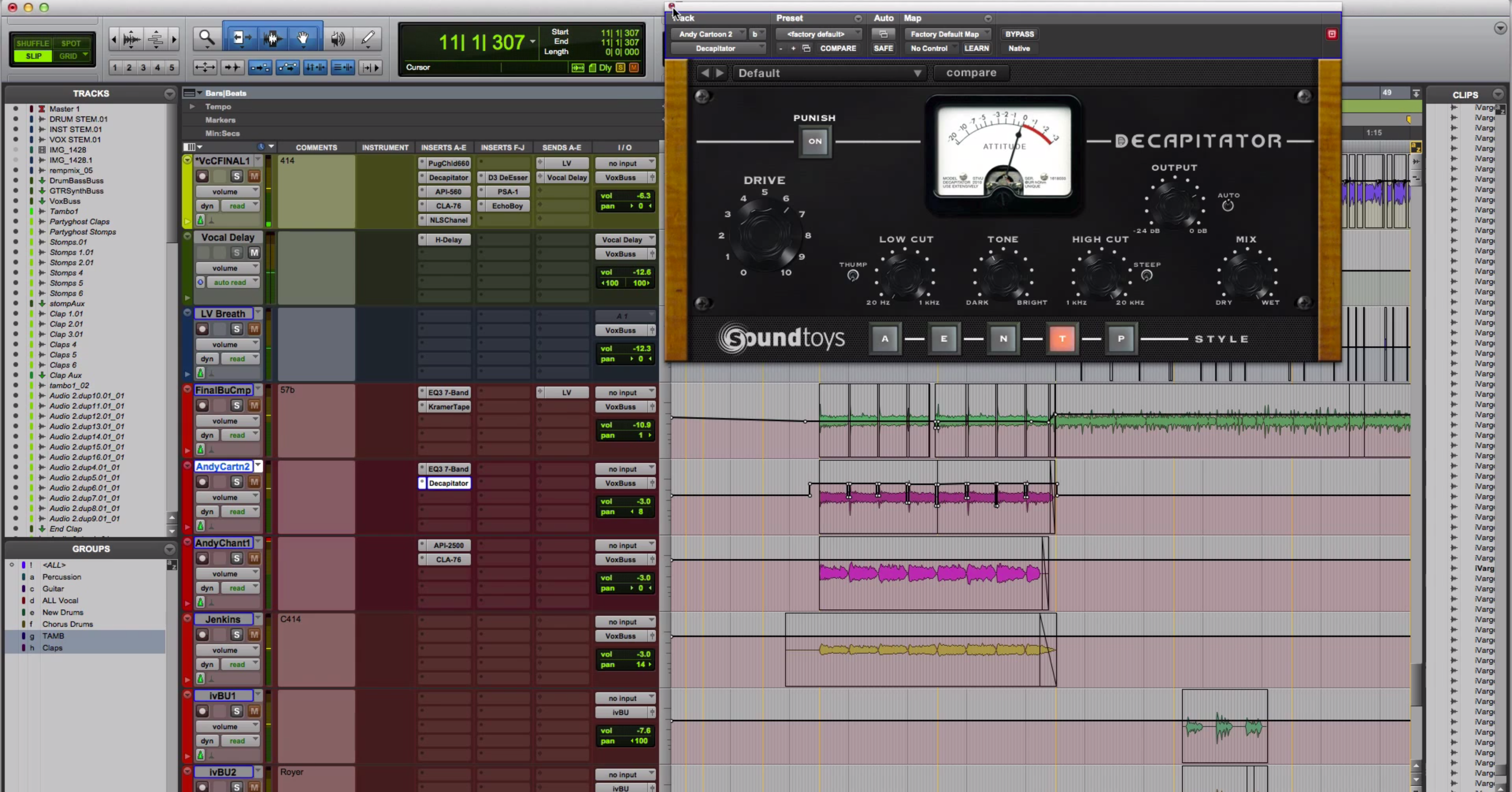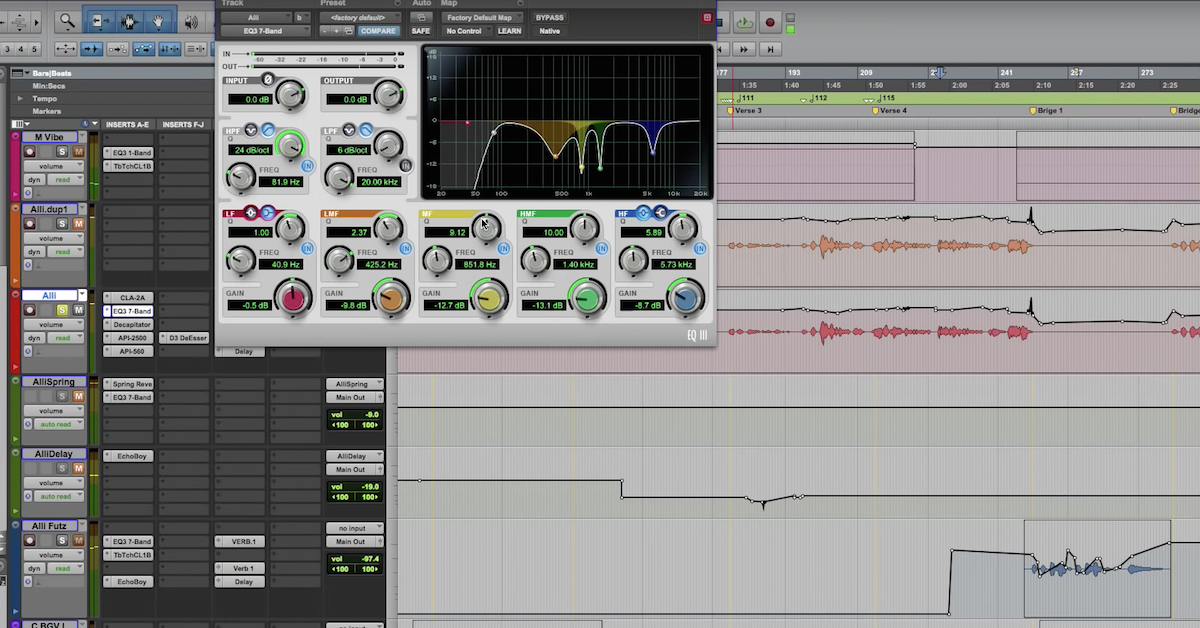5 Ways to Simplify Your Arrangements
Article Content
Maybe you’ve heard this before, but there’s only so much a listener can really pay attention to in a song. Empty space and a sense of “musical breath” can do a lot to help your audience hear your work for what it really is.
The most common problem I hear in clients’ sessions is a lack of space with too much going on in an arrangement. With no track limits in most DAWs, or limits so high it’s nearly impossible to reach them, there’s very little natural incentive to cut off new ideas for parts in an arrangement.
Though it can feel very inspiring to stack layer after layer of ear candy into a song, those sorts of embellishments can start to take away from the whole after a while. A successful production is usually one where smart decisions have been made about what’s essential to the song.
Consider this analogy: You’re sitting at a high-end restaurant. You had to make reservations months ago to get a table, and you’re waiting for your food to come out. (I don’t find myself in this sort of situation all that often, and chances are maybe you don’t either. I humbly ask you to use your imagination and humor me for a minute.)

A great chef counts out exactly 10 beans.
Anyway, your food arrives. Imagine what’s on the plate. Is it stuffed from end to end with everything the chef knows how to make? Hell no! The plate is most likely a carefully curated selection of flavors and textures, chosen for the way they complement each other and highlight the primary ingredient in the dish. You know, the one listed first on the menu. There’s also probably quite a bit of empty space on that plate — maybe with a drizzle of some sort of red wine reduction, but the metaphor starts to break down with regards to music production around there.
Can you see where I’m going with this? Think about one of your sessions now, and ask yourself honestly: do you get a clear sense of what the main ingredients of the song are, and how the other musical flavors highlight those ingredients? Or does it feel more like the chef is showing off how many different spices are in their spice rack?
Chances are, the audience is not going to fall in love with every little bit of ear candy in a song the way the producer will. Losing sight of the big picture can be easy the deeper we get into the process of developing a piece of music. Fortunately, there are some simple, concrete steps you can take to give your songs the reality check they might need to be the best version of themselves.
1. Cut the Parts You’re Unsure Of
Ever been in this scenario? You get a killer idea for a new part — maybe a lead line or a rhythmic pattern — you record a take, and it adds something nice to that section of the song. You like the part so much you decide to keep playing with the idea through the next section. It doesn’t have the same spark as that original idea you had, but you keep on jamming while that “record” light is lit. The new idea doesn’t quite “pop” as the first one did, but you’ve gotten pretty attached to the tone and it’s hard to cut out any of those takes, so it all stays.

Yeah … that glockenspiel part is not on the list.
There’s no law that says once an instrument enters a song, it can’t leave again until the end. Ins and outs are definitely allowed at this party. In fact, having a part overstay its welcome is a great way to make the original idea — the one you liked so much — much less impactful. Missing a sound when it goes away isn’t a bad thing — it will only be that much more satisfying when it comes back later.
2. Cut the Quiet Stuff
Is there anything in the arrangement that sounds great soloed, but the only way it fits in the mix is turned down so far it becomes unnoticeable on a casual listen? As much as you might love that part, it might be stealing more from the song than it adds. If anything in your track only works if it’s too quiet to be consciously audible, ask yourself a few questions:
- Is the part supporting another line, adding weight or depth to make a primary element more interesting?
- Is the part featured prominently in a section where the dynamics of the song get quieter?
- Is there a noticeable loss when you mute the track entirely?
If you didn’t answer yes to at least one of those questions, chances are the part is unnecessary. Sure, you could leave it in, but it would only be eating up headroom that could be used for something you want the listener to hear. Mute it and don’t look back!
3. Cut the Stuff That Competes
If you’ve been reading this article thinking, “how can I possibly decide what in a song is most important? My songs are my children and cutting a part would be like cutting off a finger!” then I have some suggestions for you. First, chill out — and second: if there’s a main vocal in your song, it’s probably one of the most important elements. Drums? Same deal. Bass? Main chordal instrument? You get the picture. I’m talking about the parts that the song couldn’t exist without.
Now take a look at those other tracks in your session. Some of them probably support one of those main elements — think auxiliary percussion, backup vocals, doubled parts, harmonies, etc. Those sorts of parts are probably safe to keep. Out of everything that doesn’t fit that description, though, does any of it sit in the same register as one of those primary ingredients? If so, do you struggle to hear the main part when the secondary part is in? Melodic parts like lead guitars and synths that sit in the same register as the main vocal or bass are common culprits of this sort of competition for prime frequency real estate.
If those competing parts still feel important enough to keep, look for a simple way to create room for them. My article on taming midrange has some suggestions for solutions that involve tools like EQ and multiband processing, but sometimes panning or ducking the competing part is enough. If the secondary part still competes with something as important as a lead vocal, though, consider losing it altogether.
4. Clean out the Bass-ment
The above point about avoiding parts that compete for frequency real estate holds especially true when those frequencies sit down below 100-150 Hz. Low-end instruments like kick drums and bass require a lot of headroom in a mix. It can also be more difficult for our ears to pick up movement among different parts in that register than it is when listening to parts that sit higher.

This is what I see when I close my eyes and listen to that harmonized bass line.
Effective arrangements most often have one tonal bassline and one bass percussive instrument. Sometimes, one instrument like a pitched 808 kick can pull double duty and serve both roles. Doubling bass lines is more often than not a recipe for comb filtering or mud than for fat, powerful low end.
If you must keep that bass double, see if there’s a way to get it to “speak” in a higher register, using EQ or saturation to emphasize higher harmonics over fundamentals that compete with primary low-end elements. Keeping your low-frequency parts mono down the center and panning supportive layers toward the sides can help them coexist too.
5. Start with the Basics and Build Back Up
Sometimes, we get so deep in the weeds of working on an arrangement that regaining some perspective is the only way to move forward. In those instances, it can be helpful to mute everything that isn’t the core of the song and build the arrangement back out from there.
Find the core rhythm tracks, the main vocal or melodic part, the primary chordal and textural parts. Mute everything but those tracks and listen. Does the song feel done? It might! It’s not a good feeling to realize that you’ve worked on a whole production that isn’t adding anything to a song, but it’s better to have that realization than it is to keep working on an arrangement that’s only hurting the song.
It may be that the core works on its own and only needs to be strengthened, rather than adding new, unique musical ideas. If there are other parts that work to reinforce those central elements, bring them back in. Otherwise, find ways to make those primary ingredients stronger with processing.
More likely than not, though, there are some good ideas lurking in the rest of the arrangement that should be brought back into the mix. Begin reintroducing those layers — melodic leads, auxiliary percussion, textural layers, drops, risers, etc. — starting from the most important ones, listening to what each adds when you unmute it. Listen critically to each, because every layer may contain some sections that won’t make the cut. Where does it feel like it’s working? Where doesn’t it?
It can be very illuminating to hear these layers in a less dense context. You might realize you had forgotten about certain parts entirely! If you discover anything you had forgotten about and didn’t miss — get rid of it!

Hold each track in your hands and ask “do it be hittin’ right?”
This approach can be kind of extreme and time-consuming. But for those situations where we really lose objectivity on our work, sometimes this sort of Marie Kondo-esque approach is what is needed. Pull the whole production out of the closet and pay attention to what feels out of place.
Conclusion
I wish that there was a fail-safe way to know whether a part is or isn’t working in an arrangement. Unfortunately, we all have to make difficult calls about ideas we’re attached to when producing music. Even in the most ideal scenarios, some compromise is going to be necessary to get a whole arrangement to play nicely “on tape.”
The good news is, there are some reliable objective measures we can use to help us make tough decisions. These are a few of the ones I find most helpful. What do you do to keep your perspective fresh while editing parts? Tell me in the comments!






